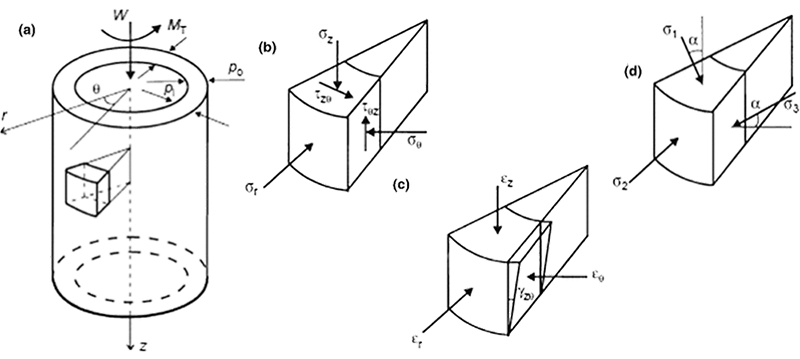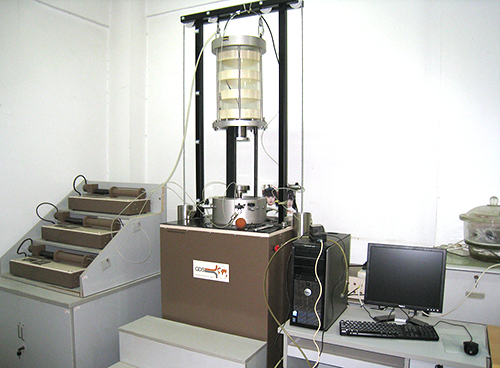Experimental study of anisotropy and non-coaxiality of granular solids
- Yang Y, Fei W, Yu H-S, Ooi J, Rotter M. Experimental study of anisotropy and non-coaxiality of granular solids. Granular Matter 2015, 17:189-196, doi.
Anisotropy and non-coaxiality are two important characteristics of particulate materials, and they significantly influence their mechanical behavior. The anisotropy is mainly attributed to non-uniform distributions of particle contacts and particle interaction forces. There generally exists a bedding plane in assemblage of granular solids and different loading directions with respect to the bedding plane lead to different stress–strain responses. Studies indicate that even the assemblage of spherical particles exhibit anisotropy. The non-coaxiality refers to the non-coincidence of principal stress directions and plastic strain rate directions when an assemblage of granular solids is subjected to loading paths involving principal stress rotations. Numerous test results indicate that the change of principal stress orientations without the change of their magnitudes can lead to plastic deformations, and the orientation of principal plastic strain rates is different from that for principal stresses.

Fig.1 Idealized stress and strain components within the HCA subjected to axial load W, torque MT, internal pressure Pi and outer pressure Po; (a) hollow cylinder coordinates and loads; (b) element component stresses; (c) element component strains; (d) element principal stresses
Previous experimental studies of anisotropy and non-coaxiality by using the hollow cylindrical apparatus are mainly focused on granular soils, which feature irregular particle shapes and non-uniform particle size distributions. This paper experimentally investigates these two characteristics on assemblages of particulate materials with regular particle shapes and uniform particle sizes. These assemblages are made from spherical, cylindrical and cubical particles, with an increasing order of particle angularity. Two types of loading paths in the hollow cylindrical apparatus are applied. One is the monotonic loading path with a range of fixed angles of major principal stress with respect to the horizontal bedding plan, used to investigate the anisotropy of materials. The other is the path of pure principal stress rotations, used to study the non-coaxiality. The experimental results indicate that these three materials exhibit a strong anisotropy and non-coaxiality. Their stress–strain responses are dependent on the orientation of major principal stress. The non-coaxiality is a function of stress ratio. In addition, there is a noticeable trend that these two characteristics are dependent on the angularity of particles. The more angular the particles are, the greater anisotropy and non-coaxiality take place.

Fig.2 Hollow cylindrical apparatus
